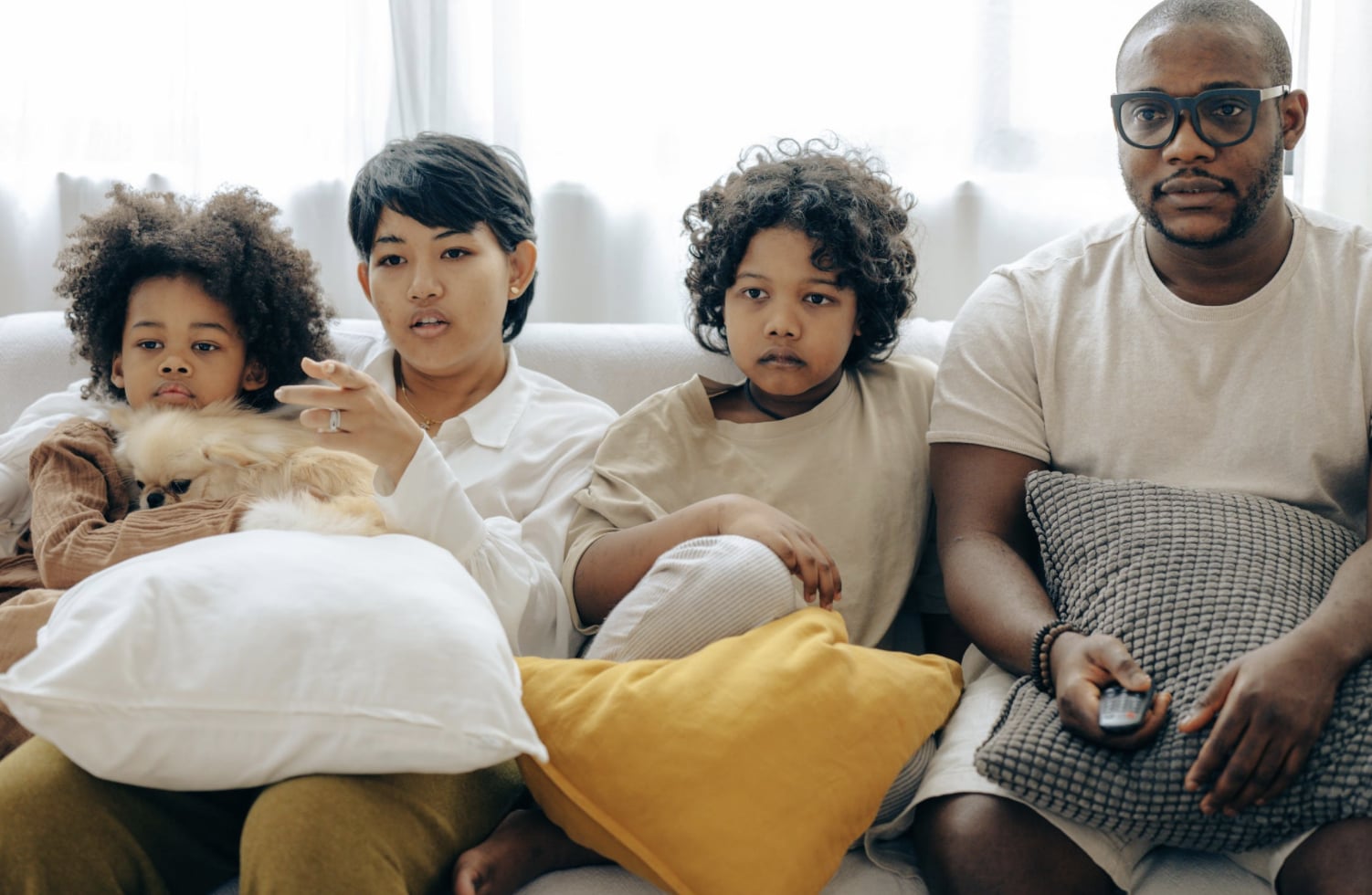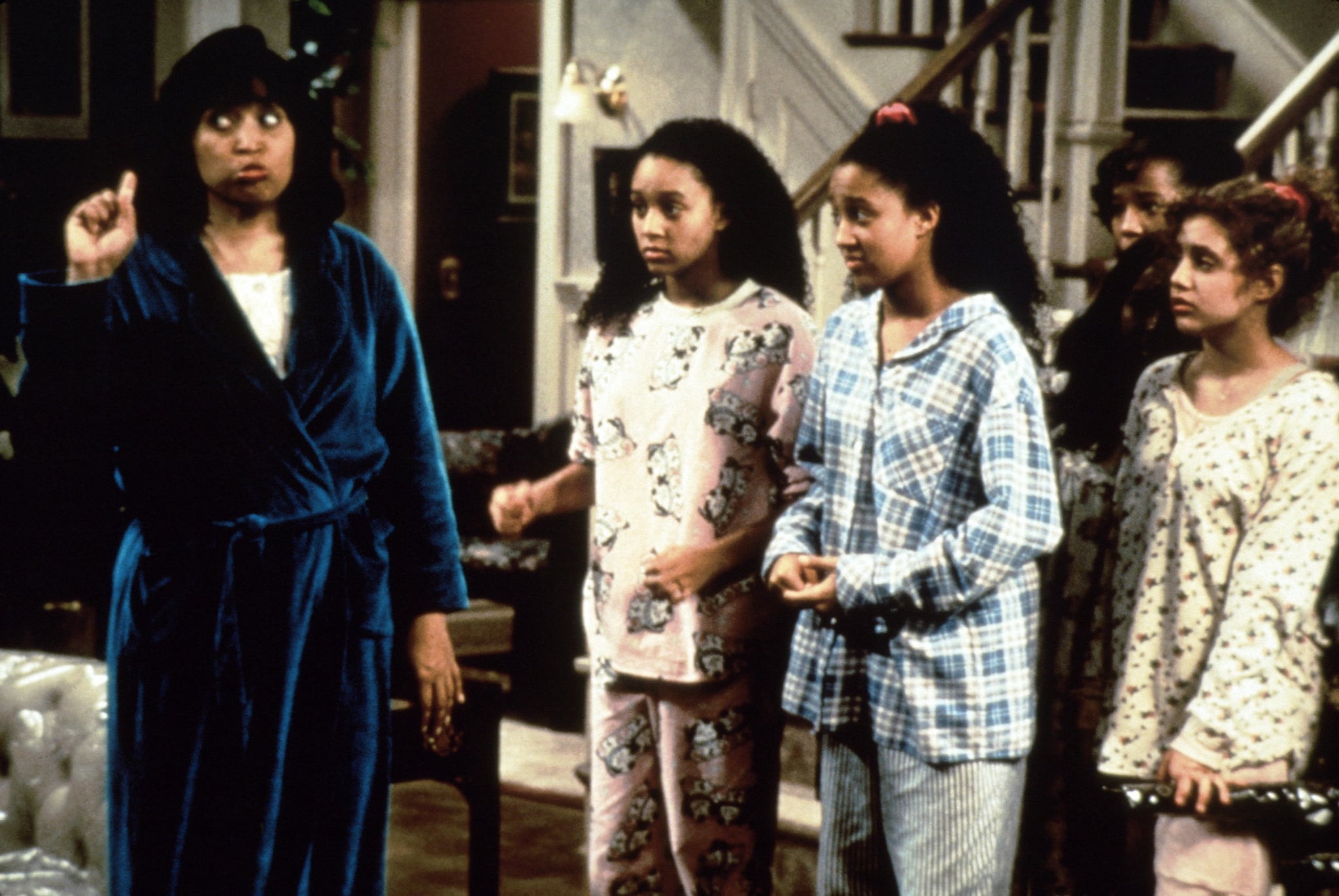 Image Source: Pexels [1]
Image Source: Pexels [1]
Ever since Disney+ [2] launched, I've been watching copious amounts of Lizzie McGuire, Kim Possible, Boy Meets World, That's So Raven and so many more. It's bringing up very fond memories of my sisters and I watching these shows religiously on weekday mornings before school and spending all day Saturday in front of the TV.
It's led me down a path of rewatching all the shows and movies I worshiped when I was younger. But as I rewatch these shows, I noticed very few of them actually showed authentic Black hair nighttime routines. Claire Huxtable, in The Cosby Show was always shown with bouncy, shiny and unwrapped curls when she went to sleep. Ashley and Hilary Banks in The Fresh Prince of Bel Air, paraded around in glamorous nightgowns and PJ's but never with a head covering. I'm starting to wonder if it was intentional that Angela from Boy Meets World never even appeared in a nighttime scene.
Luckily, I was too caught up watching as a kid that I hadn't realised such a vital part of my own lived experience — my nighttime hair routine — was missing from television shows like The Fresh Prince of Bel Air, Proud Family or Sister, Sister. These shows were just as much staples in my house as my bonnet was [3]. They taught me about life, friendship and my identity. But now I'm convinced it was all through a white lens, carefully crafted by white directors, writers, and producers who didn't honour Black hair.
For many Black women, wearing a bonnet is as routine as brushing your teeth [4]. It is a necessary layer of protection to maintain whatever style you're sporting. It helps keep edges neat and frizz away. That bonnet is a natural part of Black girl existence, so why isn't it shown on television?
 Image Source: Everett Collection [5]
Image Source: Everett Collection [5]
Adjoa B. Asamoah [6], an impact and political strategist who developed the legislative strategy for the CROWN Act, believes that the lack of representation behind the screen is hindering Black authenticity. "There's a whole crew of powerful Black women ensuring there is equitable representation across a number of spaces, including on big stages and screens everywhere. Retain Black women! We exist!" Like Adjoa, Black actress Nia Long placed the blame on the hiring team when she told Variety [7] that, "producers, studios, networks, need to have a mandate where the hair and makeup trailer is diverse."
Today, when I watch shows like Insecure, black-ish, How To Get Away with Murder, and Empire, I relish in the authenticity in every scene. Issa Rae in Insecure wakes up to Lawrence with a scarf tie around her head, Tracee Elis Ross in black-ish plays a doctor and has no concern for the outside world's perception of what doctors' hair should look like, Annalise Keating of How To Get Away with Murder has an iconic scene [8] where she takes her wig off and reveals her natural afro hair, Taraji P. Henson of Empire often wears extravagant head scarves to bed and to meetings. These are the women that I most see myself in. They are unapologetically themselves and bring a true picture of what Black hair care is actually like.
Showing women of colour in bonnets on white TV shows would help bridge the gap between white and Black.
These television shows are produced by Black people, for Black people. Which is a celebration in it's own right, but in this case, posed as a double edge sword as the reach is often insular -- seen and received by women of colour, instead of by the white audiences or cultures that actually need the exposure and education. For the audiences and cultures who aren't privy to this ritual, it's a teaching moment — one that normalizes the nuances and traditions of nighttime routines in Black culture. Showing women of colour in bonnets on white TV shows would help bridge the gap between white and Black. The more Issa Rae's and Annalise Keating's the world gets to see, the more opportunity for outside communities to understand our journey.
Representation matters. The visibility would celebrate Black and brown girls everywhere who are struggling to see themselves on the screen. It would help them form their identities and fuel their self-worth. It would show girls that caring for our hair with a bonnet is a good thing to do and that it's a normal thing girls do.
To not show women of colour in their bonnets — their natural state at night — is to erase part of our identity. White TV shows cannot continue to highlight Black leads without addressing the headscarf. Covering and protecting Black hair is a significant part of the Black identity. And if Hollywood is serious about ending systemic racism [9] as it embraces the Black Lives Matter [10] movement, showing authentic Black experiences, like wearing a bonnet, could be an avenue to proper representation and celebration. If TV producers and writers want to create true and authentic stories, the bonnet can no longer be absent on screen.